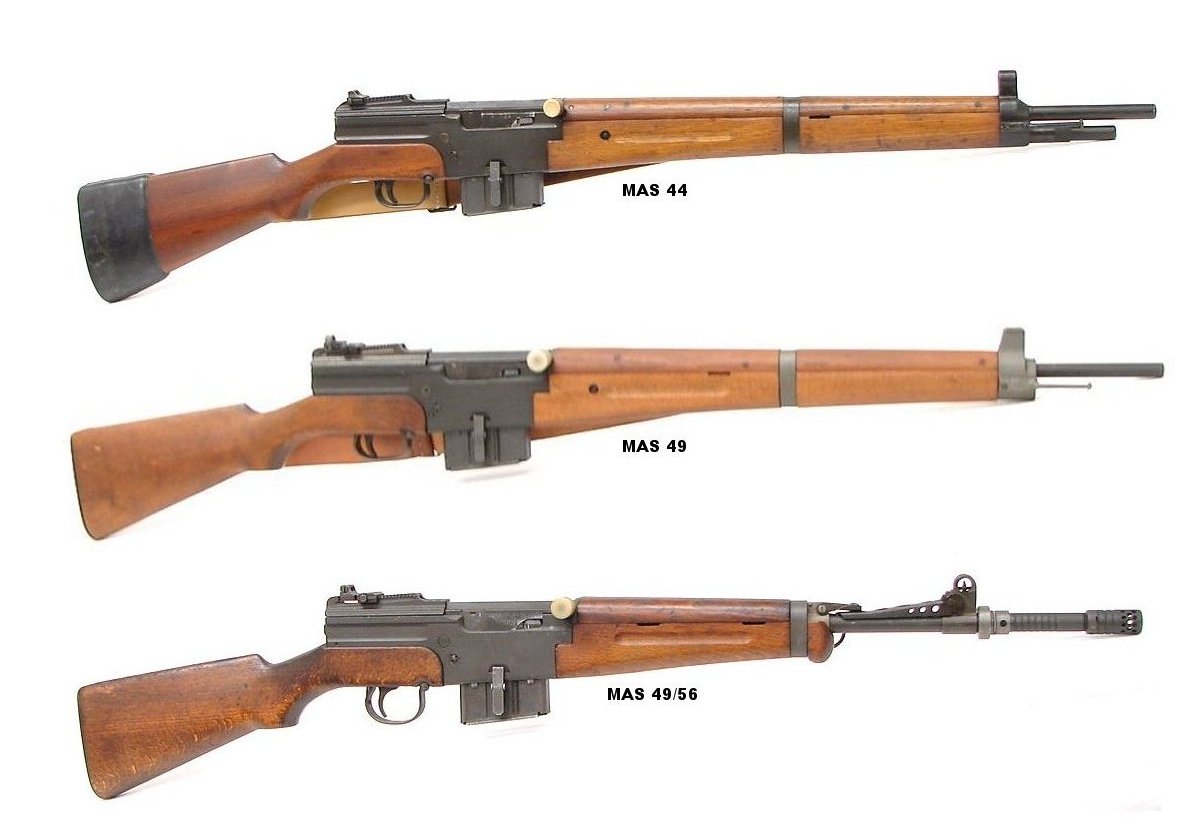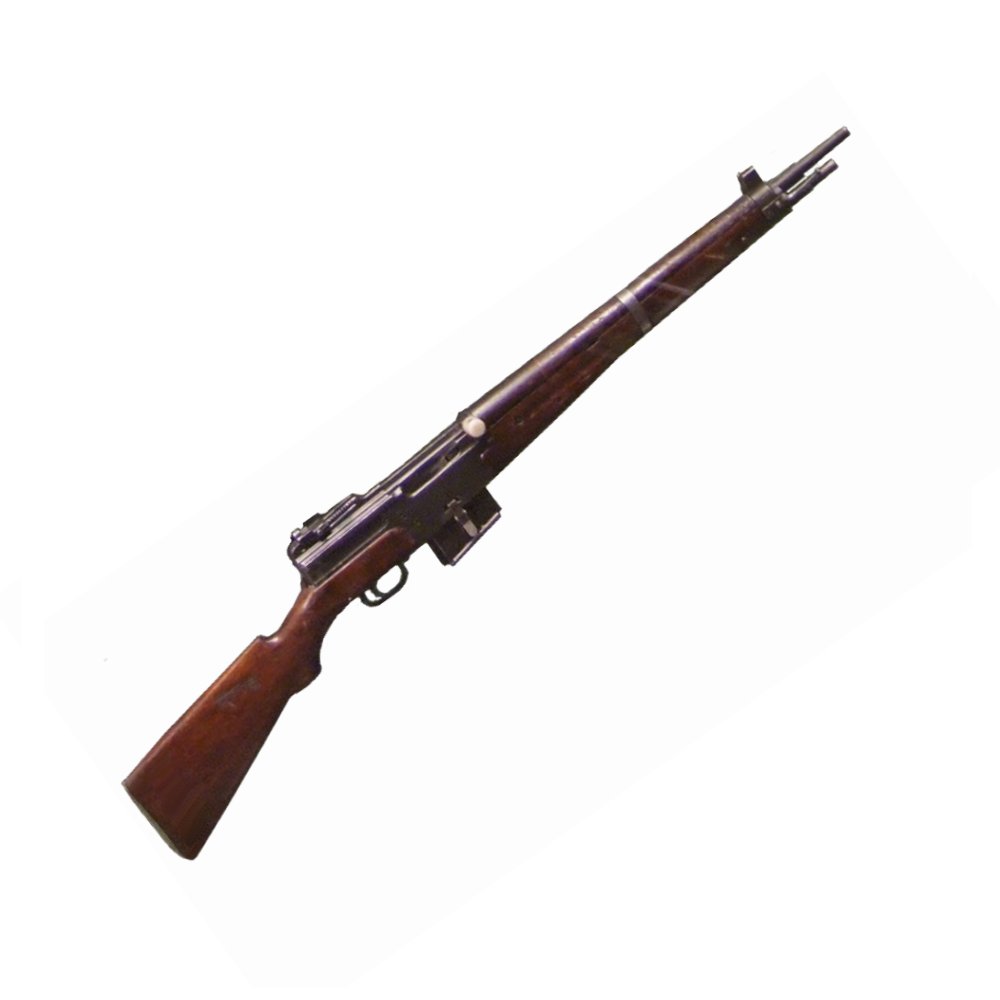Unveiling The MAS 49 Rifle: History & Specs | Learn More
What if a single firearm could encapsulate the evolution of French military design, bridging the gap between interwar innovation and Cold War necessities? The MAS-49 and its successor, the MAS-49/56, represent precisely that, a compelling chapter in the history of autoloading rifles that combines technical ingenuity with battlefield adaptation.
The genesis of the MAS-49 lies in the complex landscape of French military thinking during the 1930s. Faced with the evolving challenges of modern warfare, the French military sought to replace its bolt-action rifles with a more efficient autoloading design. This led to the exploration of several early autoloading rifle designs, each contributing to the eventual culmination of the MAS-49. These initial experiments set the stage for a rifle that would become a mainstay of the French military for a significant period.
The MAS-49 wasn't simply a copy of existing designs; it incorporated innovative features that set it apart. It was a direct gas impingement design, a system mirroring the approach seen in the Swedish Ljungman and later, the American M16. This method of operation utilizes gas tapped from the barrel to cycle the action. Further enhancing its robustness, the rifle employed a tilting bolt for locking, a mechanism also found in the Browning Automatic Rifle (BAR) and, later, the Belgian FN FAL. This design choice contributed to the rifle's overall reliability and ability to withstand the rigors of combat.
The MAS-49 was chambered for the 7.5x54mm French cartridge, a round specifically developed to balance power, accuracy, and manageable recoil. This cartridge provided a solid foundation for the rifle's performance, enabling effective engagement at typical combat distances. This choice of ammunition ensured compatibility with existing French military standards and logistics.
The transition from the MAS-49 to the MAS-49/56 was driven by the evolving needs of the French military, particularly concerning mobility and adaptability. The MAS-49/56 was specifically designed to improve upon the original, addressing some of its inherent limitations, and adapting it to the changing requirements of modern warfare. This evolution saw the rifle undergo significant modifications.
A key improvement in the MAS-49/56 was a reduction in size and weight. This allowed for improved mobility, especially for airborne troops and those operating in mechanized environments. In 1957 the MAS 49/56 was introduced and addressed a few issues with the original MAS 49. The 49/56 was made shorter and lighter to help airborne troops be more mobile. The MAS-49/56 would become a favored firearm for those troops. These modifications enhanced the rifle's suitability for the challenges of post-war operations and its adoption within a new global landscape.
The MAS-49/56 was also designed with enhanced functionality. The 49/56 accepts 10 round removable box magazine. This contributed to its practicality in various tactical scenarios. The rifle's design was a testament to the French military's commitment to equipping its soldiers with effective and reliable firearms.
The adoption of the MAS-49 was preceded by the testing of the MAS-44A rifles, which served as a proving ground for the design. After the test series, a new pattern was adopted as the MAS-49 and put into production in 1951. Approximately 80,000 MAS-49 rifles were manufactured, showing the scale of its integration into the French military. These rifles included features like a scope mounting dovetail on the left side of the receiver and a grenade-launching muzzle device and sight, increasing its versatility on the battlefield. The French, eager to replace their Berthier carbines, made the decision to proceed without the participation of the rest of NATO soon after the organization was created.
The MAS-49 and MAS-49/56 rifles represent a distinct chapter in the evolution of military firearms. From their inception in the innovative pre-war era to their use in the Cold War, they served as a testament to French engineering and their commitment to a modern military. These rifles were more than just tools; they were symbols of a nation's defense.
The story of the MAS-49 and its successor offers insights into the design, performance, and evolution of military firearms in the 20th century. The MAS-49/56 is an improved version of the original MAS 49 French rifle. This classic and collectible military surplus rifle is chambered in 7.5x54 and is semi-automatic. The MAS-49/56 addressed a few issues with the original MAS-49 and was made shorter and lighter to help airborne troops be more mobile.
The MAS-49 and MAS-49/56 rifles are also notable for their unique characteristics, the incorporation of advanced features for their time, and their reliability in the field. These firearms demonstrated a willingness to adapt to meet the demands of combat, making them a vital component of the French military's arsenal.
| Feature | MAS-49 | MAS-49/56 |
| Chambering | 7.5x54mm French | 7.5x54mm French |
| Operating System | Direct Gas Impingement, Tilting Bolt | Direct Gas Impingement, Tilting Bolt |
| Magazine Capacity | 10 rounds (internal) | 10 rounds (detachable box magazine) |
| Length | Varies | Shorter than MAS-49 |
| Weight | Varies | Lighter than MAS-49 |
| Scope Mount | Yes (dovetail on left receiver) | Yes (dovetail on left receiver) |
| Grenade Launcher | Yes (muzzle device) | Yes (muzzle device) |
| Introduction Year | 1951 | 1957 |
| Primary Users | French Army | French Army |


